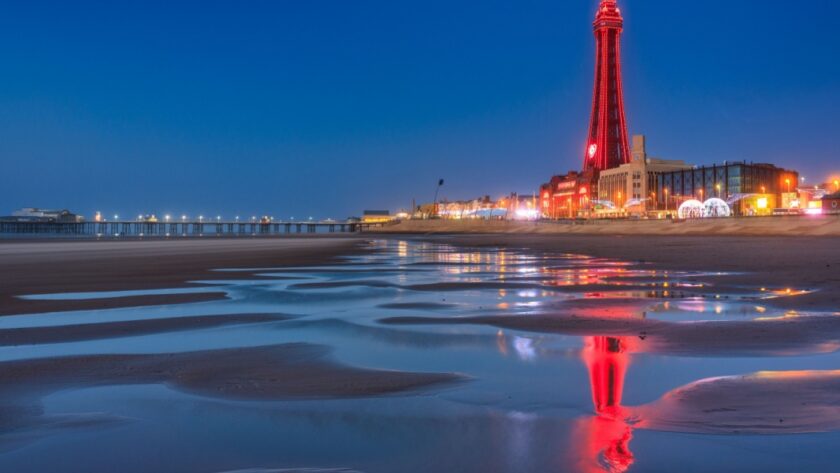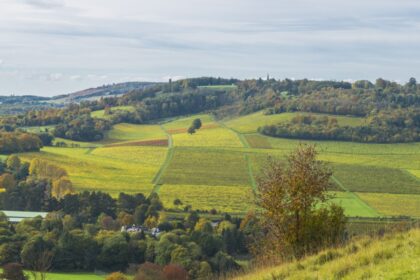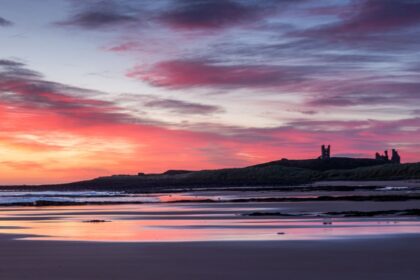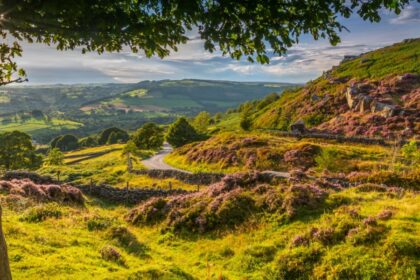Lancashire sits confidently between England’s northwest coast and the Pennines, a county that once powered the world with its mills, soot and hard graft. Today it offers a cheerful blend of seaside piers, rolling hills, proud mill towns and some of England’s friendliest people, who are never short of an opinion or a cup of tea.
It is a county that has seen fortunes rise and fall, but has kept its sense of humour remarkably well intact.
Blackpool, piers and Britain’s most famous seaside
Blackpool remains Lancashire’s boldest face – the resort that refuses to tone things down. The Blackpool Tower still rises proudly above the promenade, its ballroom filled with glittering chandeliers and whirling dancers. The three piers offer arcades, fish and chips and just the right amount of cheerful tackiness, while the illuminations in autumn turn the entire town into a glowing, slightly surreal fairground.
There are donkey rides on the beach, candyfloss stands, and the famous trams still trundle up and down the seafront as they have done for over a century. Love it or roll your eyes at it, Blackpool remains gloriously unapologetic.
Mill towns, industry and Lancashire’s hard-working roots
Inland, Lancashire’s mill towns tell the story of a county that once sat at the centre of the world’s cotton industry. Blackburn, Burnley, Accrington and Nelson all grew up around the roar of looms and the hum of factory life. The mills may be silent now, but the brick chimneys still dot the skyline like markers from a very industrious past.
The Queen Street Mill in Burnley, preserved as a working museum, offers one of the last chances to hear the rhythmic clatter of original looms in action – a reminder of the noise, skill and sweat that built these towns.
Lancaster, castles and proper county history
Lancaster, the county town, is full of history but on a refreshingly human scale. The castle sits right in the centre, its thick stone walls and towers once doubling as a prison. You can still take a guided tour through its grim old cells and courtrooms, while the rest of the town offers Georgian streets, a handsome priory and plenty of spots for a slow riverside walk.
The River Lune winds through the town, providing gentle views and the occasional passing heron.
Forest of Bowland, fells and empty lanes
To the east, Lancashire tips into wilder country as the Forest of Bowland spreads out, not a forest in the tree-filled sense, but a stretch of high, lonely moorland where sheep outnumber people and the views go on for miles. The walking is excellent, the villages are small and stone-built, and the lanes offer the sort of driving experience that makes you glad you didn’t bring a wide car.
This is one of England’s quieter Areas of Outstanding Natural Beauty — perfect for those who like their scenery unspoilt and their footpaths pleasantly underpopulated.
Ribble Valley, market towns and very good food
The Ribble Valley rolls gently along, filled with stone villages, country pubs and rather a lot of fine dining for a rural patch of England. Clitheroe, with its tiny Norman castle keep, offers market town charm, while villages like Whalley, Waddington and Downham feel like they’ve barely changed in a century — and see little need to.
The valley has quietly built a reputation as one of England’s unexpected foodie hotspots, with local produce, craft breweries and some surprisingly ambitious kitchens tucked into unlikely corners.
Where England wears its heart on its sleeve
Lancashire doesn’t do grand ceremony. It offers mills and moors, piers and pubs, with a blunt northern humour and a strong cup of tea never far away. It’s not always the prettiest, but it’s always honest — and after a few days, you’ll likely find yourself rather fond of it.





